Below are listed the areas of research in the doctoral study program APPLIED PHYSICS (APF) are offered by the experts from the Department of Physics FEE CTU in collaboration with partners from the Czech Academy of Sciences. Specific topic of the PhD thesis will be proposed based on the discussion of student with prospective supervisors in a given research area. In case of interest, contact the APF program assistant Jitka Žatečková or the guarantor of the APF program prof. Bohuslav Rezek.
Financial support for the PhD study
A scholarship for full-time students in the doctoral study program of CZK 15 000 per month (approx. 580 EUR) is awarded to selected outstanding applicants for up to 4 years, i.e. standard length of the PhD study. Excellent students can get even significantly more, especially when involved in grant projects. The scholarship continuation is reviewed each year based on the evaluation of student performance.
Essential Information about Doctoral Studies
Research areas
Efficient production of fast ions and neutrons in z-pinches
 Z-pinch belongs to the most fascinating objects in plasma physics due to its natural occurrence and variety of applications. A simple principle and geometry are the main reasons why z-pinches provide a very high conversion efficiency of stored electrical energy into plasma. At present, z-pinches are the most powerful and the most efficient laboratory sources of soft x-ray radiation. Z-pinches have also been studied as efficient sources of fast ions and fusion neutrons for decades. Despite the long-lasting research efforts, the ion acceleration in z-pinches belongs to the oldest unsolved problems in plasma physics. The main aim of this PhD work is to provide new data about energetic particles for the verification of various hypotheses of acceleration mechanisms. The emphasis will be put on comprehensive diagnostics of relativistic electrons, fast ions, and fusion neutrons. Considering the natural occurrence of the pinch effect in space plasmas, the study of acceleration mechanisms in z-pinches can also provide better understanding of general processes influencing the production of energetic particles in the universe.
Z-pinch belongs to the most fascinating objects in plasma physics due to its natural occurrence and variety of applications. A simple principle and geometry are the main reasons why z-pinches provide a very high conversion efficiency of stored electrical energy into plasma. At present, z-pinches are the most powerful and the most efficient laboratory sources of soft x-ray radiation. Z-pinches have also been studied as efficient sources of fast ions and fusion neutrons for decades. Despite the long-lasting research efforts, the ion acceleration in z-pinches belongs to the oldest unsolved problems in plasma physics. The main aim of this PhD work is to provide new data about energetic particles for the verification of various hypotheses of acceleration mechanisms. The emphasis will be put on comprehensive diagnostics of relativistic electrons, fast ions, and fusion neutrons. Considering the natural occurrence of the pinch effect in space plasmas, the study of acceleration mechanisms in z-pinches can also provide better understanding of general processes influencing the production of energetic particles in the universe.
Numerical simulations for plasma diagnostics
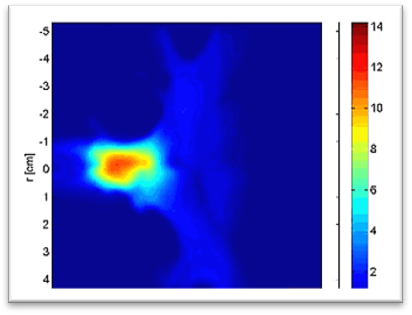 Diagnostics of high energy density plasma via neutrons can provide a range of essential data. Advantage of neutrons diagnostics and spectroscopy is their indifference to electric and magnetic fields. One can thus obtain unobstructed infromation about fusion reactions, plasma temperature, ion and neutron distribution during the fusion process. The actual PhD work will be focused on numerical simulations of neutron diagnostics in a fusion plasma using Monte Carlo and other techniques. Similar simulations are currently being developed at Imperial College London (UK] and at Sandia Nat. Lab. (USA). The kernel of the code is available also at CTU. Prerequisites for successful completion is understanding of general properties of plasma discharges, working with database of nuclear data, and knowledge of the kinematics of fusion reactions. As part of the doctoral thesis we also assume development of novel numerical codes that will help reconstruct the ion distribution of fusion plasma based on time-of-flight neutron diagnostics in specific experiments performed by our research group.
Diagnostics of high energy density plasma via neutrons can provide a range of essential data. Advantage of neutrons diagnostics and spectroscopy is their indifference to electric and magnetic fields. One can thus obtain unobstructed infromation about fusion reactions, plasma temperature, ion and neutron distribution during the fusion process. The actual PhD work will be focused on numerical simulations of neutron diagnostics in a fusion plasma using Monte Carlo and other techniques. Similar simulations are currently being developed at Imperial College London (UK] and at Sandia Nat. Lab. (USA). The kernel of the code is available also at CTU. Prerequisites for successful completion is understanding of general properties of plasma discharges, working with database of nuclear data, and knowledge of the kinematics of fusion reactions. As part of the doctoral thesis we also assume development of novel numerical codes that will help reconstruct the ion distribution of fusion plasma based on time-of-flight neutron diagnostics in specific experiments performed by our research group.
Generation of ozone and other active species for environmental applications
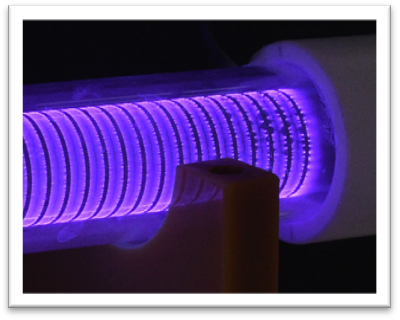 The work will focus on generation and diagnostics of non-thermal electrical discharges in air at atmospheric pressure, like the dielectric barrier or corona discharges, as the source of electrons, nitrogen oxides, ozone, and many other types of ions and reactive species. These discharge products are highly useful for environmental or biomedical applications. Efficiency of the active species generation depends on the electrical parameters of the discharge, type of the gas, gas pressure, configuration of electrodes and also on the material of electrodes including its electronic and photocatalytic properties. Interaction of the plasma with the employed materials (incl. diamond or metal oxides) will thus also be studied as it can significantly affect ionization processes in plasma and ozone production and other active species as well as their efficiency in the prospective applications.
The work will focus on generation and diagnostics of non-thermal electrical discharges in air at atmospheric pressure, like the dielectric barrier or corona discharges, as the source of electrons, nitrogen oxides, ozone, and many other types of ions and reactive species. These discharge products are highly useful for environmental or biomedical applications. Efficiency of the active species generation depends on the electrical parameters of the discharge, type of the gas, gas pressure, configuration of electrodes and also on the material of electrodes including its electronic and photocatalytic properties. Interaction of the plasma with the employed materials (incl. diamond or metal oxides) will thus also be studied as it can significantly affect ionization processes in plasma and ozone production and other active species as well as their efficiency in the prospective applications.
Correlative microscopy and spectroscopy of 2D materials in photovoltaics
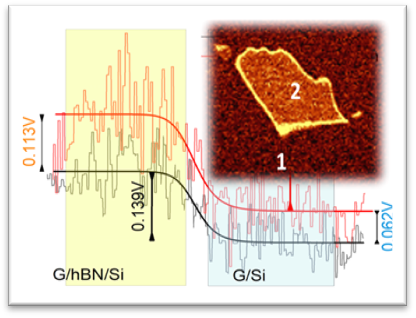 New materials and technologies that can offer more flexible forms and easier production, better properties under diffusse illumination, blend unobtrusively with urban or countryside environment or provide higher power conversion efficiency are being intensively researched to complement so far dominating silicon photovoltaic (PV) solar cells in energy production. The PhD theses in this area will explore the use of selected modern low-dimensional materials (e.g. MoS2, graphene, hBN, M-Xenes, nanoparticles) in organic or hybrid photovoltaic devices (based on polymers or perovskites). Properties and function will be characterized with view to the composition, microstructure, stability, passivation and CTL, ion migration, light trapping, exciton dissociation and electronic transport effects. Methods of correlative microscopy and spectroscopy (AFM, KPFM, SKP, APS, micro-Raman and micro-PL mapping, micro-IV), glovebox with controlled atmosphere, solar simulators and tunable laser will be employed. The work will be performed within the Centre of Advanced Photvoltaics (CAP) at CTU in collaboration with the Institute of Physics, Czech Academy of Sciences and other institutions world wide.
New materials and technologies that can offer more flexible forms and easier production, better properties under diffusse illumination, blend unobtrusively with urban or countryside environment or provide higher power conversion efficiency are being intensively researched to complement so far dominating silicon photovoltaic (PV) solar cells in energy production. The PhD theses in this area will explore the use of selected modern low-dimensional materials (e.g. MoS2, graphene, hBN, M-Xenes, nanoparticles) in organic or hybrid photovoltaic devices (based on polymers or perovskites). Properties and function will be characterized with view to the composition, microstructure, stability, passivation and CTL, ion migration, light trapping, exciton dissociation and electronic transport effects. Methods of correlative microscopy and spectroscopy (AFM, KPFM, SKP, APS, micro-Raman and micro-PL mapping, micro-IV), glovebox with controlled atmosphere, solar simulators and tunable laser will be employed. The work will be performed within the Centre of Advanced Photvoltaics (CAP) at CTU in collaboration with the Institute of Physics, Czech Academy of Sciences and other institutions world wide.
Design and characterization of diamond photonic sensor structures
 Diamond with embeded functional color/spin centers (Si, N, Ni, Ge, etc.) represents an intensively studied material for uses in opto-electronics, quantum communication as well as biomedicine due to unique optical properties. Control of properties and spatial distribution of optically active sites and manipulation of light propagation is crucial for these applications. This PhD work will include computational design and practical fabrication of such structures on microscopic level. Their photonic properties will be characterized by optical spectroscopy and micro-spectroscopy including use of confocal and near-field microscopy. Influence of surface chemical modification (from atomic groups to organic molecules) on optical properties will also be studied for prospective applications. The work will be conducted at the Institute of Physics, Czech Academy of Sciences, in collaboration with the Faculty of Electrical Engineering CTU.
Diamond with embeded functional color/spin centers (Si, N, Ni, Ge, etc.) represents an intensively studied material for uses in opto-electronics, quantum communication as well as biomedicine due to unique optical properties. Control of properties and spatial distribution of optically active sites and manipulation of light propagation is crucial for these applications. This PhD work will include computational design and practical fabrication of such structures on microscopic level. Their photonic properties will be characterized by optical spectroscopy and micro-spectroscopy including use of confocal and near-field microscopy. Influence of surface chemical modification (from atomic groups to organic molecules) on optical properties will also be studied for prospective applications. The work will be conducted at the Institute of Physics, Czech Academy of Sciences, in collaboration with the Faculty of Electrical Engineering CTU.
Molecular interactions with nanodiamonds
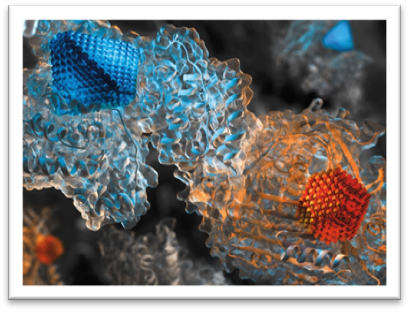 Diamond as a material has been intensively studied from the perspective of new phenomena for uses in electronics, photovoltaic devices as well as bio-sensors. Chemical modifications and interaction of diamond surface with molecules is crucial for many of these applications. Aim of this PhD work is experimental and/or theoretical characterization of diamond nanoparticles (nanodiamonds) combined with various types of organic molecules (chromophores, polymers, proteins, drugs). We already observed that nanodiamond surface can control protein corona formation, biosensor response, or exciton dissociation. Colloidal processing, optical and electron spectroscopy (Raman, FTIR, XPS), electron microscopy (SEM), atomic force microscopy (AFM) and light scattering (DLS) will be the methods used in this work. Experiments can be complemented by computations (QuantumATK) of atomic structure, bonding, electronic properties and charge transfer.
Diamond as a material has been intensively studied from the perspective of new phenomena for uses in electronics, photovoltaic devices as well as bio-sensors. Chemical modifications and interaction of diamond surface with molecules is crucial for many of these applications. Aim of this PhD work is experimental and/or theoretical characterization of diamond nanoparticles (nanodiamonds) combined with various types of organic molecules (chromophores, polymers, proteins, drugs). We already observed that nanodiamond surface can control protein corona formation, biosensor response, or exciton dissociation. Colloidal processing, optical and electron spectroscopy (Raman, FTIR, XPS), electron microscopy (SEM), atomic force microscopy (AFM) and light scattering (DLS) will be the methods used in this work. Experiments can be complemented by computations (QuantumATK) of atomic structure, bonding, electronic properties and charge transfer.
Nanodiamonds in composite materials
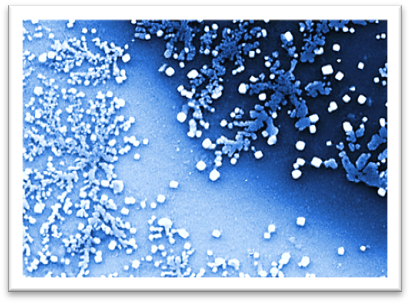 Nanoparticles are increasingly used in many fields of science and technology. Preparation of nanoparticles with well-defined properties such as size, structure, composition and chemical groups on the surface is essential. With excellent biocompatibility, photoluminescent properties and active, modifiable surface, diamond nanoparticles (nanodiamonds) offer a number of advantageous properties in this respect. Other nanoparticles (silver, gold, oxides) and 2D materials are in turn used for their optical, photocatalytic or antibacterial properties. This PhD work will study interconnection of these properties and find possible synergies between various nanomaterials. Samples of different types of nanocomposites with nanodiamonds will be prepared and their properties and functions will be measured by various microscopic and spectroscopic methods as well as electronic characterizations. The work will be conducted in collaboration between the Institute of Physics, Czech Academy of Sciences and the Faculty of Electrical Engineering CTU.
Nanoparticles are increasingly used in many fields of science and technology. Preparation of nanoparticles with well-defined properties such as size, structure, composition and chemical groups on the surface is essential. With excellent biocompatibility, photoluminescent properties and active, modifiable surface, diamond nanoparticles (nanodiamonds) offer a number of advantageous properties in this respect. Other nanoparticles (silver, gold, oxides) and 2D materials are in turn used for their optical, photocatalytic or antibacterial properties. This PhD work will study interconnection of these properties and find possible synergies between various nanomaterials. Samples of different types of nanocomposites with nanodiamonds will be prepared and their properties and functions will be measured by various microscopic and spectroscopic methods as well as electronic characterizations. The work will be conducted in collaboration between the Institute of Physics, Czech Academy of Sciences and the Faculty of Electrical Engineering CTU.
Electrical potential of nanoparticles
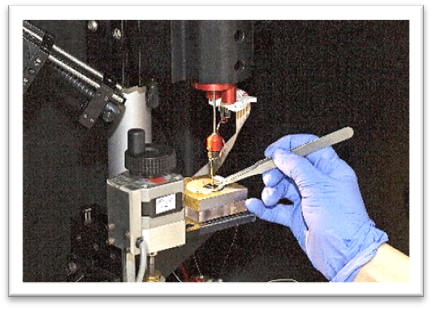 Electrical potential of nanoparticles and its dependancy on the properties of their core, surface, surrounding environment and illumination plays important role in their applications in optoelectronics, photovoltaics as well as biomedicine and biosensors. Aim of this PhD work to better understand these phenomena and mechanisms by development of experimental methodology followed by time-resolved characterization of local electrical potential of nanoparticles (diamond, silicon, silver, gold, zincoxide, etc.) and nanoparticle composites with polymers and other materials. Factors such as size distribution, layer thickness, presence of impurities (doping, color centers), plasmonic effects, etc. will be considered. Various regimes of scanning probe microscopy (AFM/KPFM, SKP/APS), illumination by tunable laser or solar simulator, and correlation with scanning electron microscopy and optical spectroscopy (Raman, infrared, photoluminescence, DLS/zeta) will be used.
Electrical potential of nanoparticles and its dependancy on the properties of their core, surface, surrounding environment and illumination plays important role in their applications in optoelectronics, photovoltaics as well as biomedicine and biosensors. Aim of this PhD work to better understand these phenomena and mechanisms by development of experimental methodology followed by time-resolved characterization of local electrical potential of nanoparticles (diamond, silicon, silver, gold, zincoxide, etc.) and nanoparticle composites with polymers and other materials. Factors such as size distribution, layer thickness, presence of impurities (doping, color centers), plasmonic effects, etc. will be considered. Various regimes of scanning probe microscopy (AFM/KPFM, SKP/APS), illumination by tunable laser or solar simulator, and correlation with scanning electron microscopy and optical spectroscopy (Raman, infrared, photoluminescence, DLS/zeta) will be used.
Electronic biosensors based on nanocrystalline diamond films
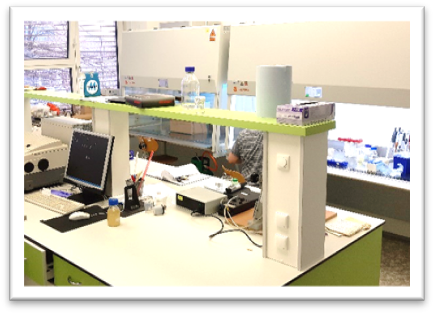 Diamond as a material has been intensively studied from the perspective of new physical and chemical phenomena for various applications. Objective of this PhD work is employing nanocrystalline diamond thin films of various morphologies (roughness, patterns, porosity) in combination with other materials (silicon, gold, graphene, etc.). Influence of composition and arrangement of the resulting composite materials, including surface chemical modifications, on electronic-transport and potential plasmonic effects will be investigated. The aim is application for new, highly sensitive and specific chemical sensors and biosensors. Plasmatic methods for surface modifications, various techniques of scanning probe microscopy (AFM/KPFM/CAFM), Raman micro-spectroscopy, impedance spectroscopy and other electrical measurements will be used in this work. Structural and electronic interactions with molecules of various substances will be studied. The sensor response will be modelled also theoretically.
Diamond as a material has been intensively studied from the perspective of new physical and chemical phenomena for various applications. Objective of this PhD work is employing nanocrystalline diamond thin films of various morphologies (roughness, patterns, porosity) in combination with other materials (silicon, gold, graphene, etc.). Influence of composition and arrangement of the resulting composite materials, including surface chemical modifications, on electronic-transport and potential plasmonic effects will be investigated. The aim is application for new, highly sensitive and specific chemical sensors and biosensors. Plasmatic methods for surface modifications, various techniques of scanning probe microscopy (AFM/KPFM/CAFM), Raman micro-spectroscopy, impedance spectroscopy and other electrical measurements will be used in this work. Structural and electronic interactions with molecules of various substances will be studied. The sensor response will be modelled also theoretically.
Nanomaterials for countering bacterial resistance to antibiotics
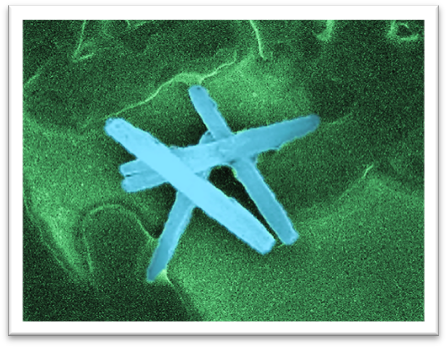 When bacterial strains are repeatedly exposed to antibiotics, survived bacteria gradually develop a defense mechanism that makes their inactivation difficult. Antimicrobial resistance (AMR) is therefore becoming on of the biggest challenges for 21st century healthcare. Due to the problems with development of new antibiotics, new ways to reduce spreading and provide effective treatment of bacterial infections need to be explored. Inorganic nanoparticles have been found to have promising antibacterial effects, and even increase the susceptibility of resistant bacteria to antibiotics. Subject of this PhD work is experimental investigation of the antibacterial effects of various types of nanoparticles (nanodiamonds, graphene, zinc oxides) on non-pathogenic gram-positive and gram-negative bacteria (Staphylococus Aureus and Escherichia coli) and compare inactivation effects with conventional antibiotics. Influence of illumination and plasma discharge activation of cell culture media will also be explored.
When bacterial strains are repeatedly exposed to antibiotics, survived bacteria gradually develop a defense mechanism that makes their inactivation difficult. Antimicrobial resistance (AMR) is therefore becoming on of the biggest challenges for 21st century healthcare. Due to the problems with development of new antibiotics, new ways to reduce spreading and provide effective treatment of bacterial infections need to be explored. Inorganic nanoparticles have been found to have promising antibacterial effects, and even increase the susceptibility of resistant bacteria to antibiotics. Subject of this PhD work is experimental investigation of the antibacterial effects of various types of nanoparticles (nanodiamonds, graphene, zinc oxides) on non-pathogenic gram-positive and gram-negative bacteria (Staphylococus Aureus and Escherichia coli) and compare inactivation effects with conventional antibiotics. Influence of illumination and plasma discharge activation of cell culture media will also be explored.
Plasma deposition of diamond and carbon nanomaterials for medicine
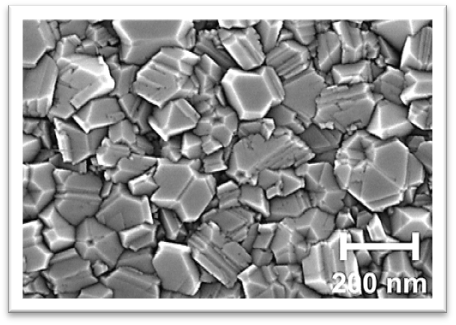 Chemical vapor deposition (CVD) enables preparation of various allotrop forms of carbon (diamond, carbon nanotubes, graphene, etc.). Progress in the diamond plasma CVD technologies enabled research to move towards industrial applications. In this PhD work, a modified plasma CVD process will be explored in a low-pressure microwave technology with linear antennas for preparation of different carbon forms in one deposition system. The proces enables to tune hybridization of carbon atoms, activate functional impurities, define the surface morphology and crystal structure of deposited materials. Diamond layers will be grown at low temperatures (300 °C) by adding CO2 to a gas mixture of CH4 and H2. Combination with radiofrequency-excited plasma will be studied to expand the process for growing also carbon nanotubes and graphene. The work will be conducted in collaboration between the Institute of Physics, Czech Academy of Sciences and the Faculty of Electrical Engineering CTU.
Chemical vapor deposition (CVD) enables preparation of various allotrop forms of carbon (diamond, carbon nanotubes, graphene, etc.). Progress in the diamond plasma CVD technologies enabled research to move towards industrial applications. In this PhD work, a modified plasma CVD process will be explored in a low-pressure microwave technology with linear antennas for preparation of different carbon forms in one deposition system. The proces enables to tune hybridization of carbon atoms, activate functional impurities, define the surface morphology and crystal structure of deposited materials. Diamond layers will be grown at low temperatures (300 °C) by adding CO2 to a gas mixture of CH4 and H2. Combination with radiofrequency-excited plasma will be studied to expand the process for growing also carbon nanotubes and graphene. The work will be conducted in collaboration between the Institute of Physics, Czech Academy of Sciences and the Faculty of Electrical Engineering CTU.
Plasma functionalization of nanoparticles
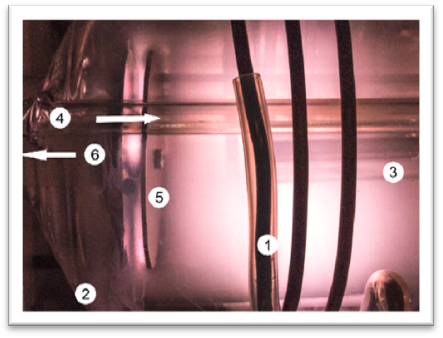 This PhD work will elucidate the influence of plasma functionalization of the surface of nanoparticles on their optical properties measured by methods of optical absorption in the infrared region of the spectrum, Raman scattering and photoluminescence. ZnO, diamond and other nanoparticles will be exposed to plasma at room or elevated temperature in a glowing discharge of dilute gases (Ar, H2, O2, NH3, N2) inductively excited by a high-frequency electromagnetic field of 13.56 MHz. Subsequently, pellets with a diameter of 3 mm will be pressed from the powder samples for spectroscopic analyzes. The measurement of vibrational spectra will be performed in a Nicolet FTIR iS50 infrared spectrometer equipped with accessories for IRRAS (infrared reflectance-absorbance spectroscopy), ATR (attenuated total reflectance) and infrared Raman spectroscopy. The photoluminescence spectra will be collected in the spectral range 350-1500 nm using optical spectrometers equipped with LED or laser excitation sources and 3 K cryostat.The work will be conducted at the Institute of Physics, Czech Academy of Sciences, in collaboration with the Faculty of Electrical Engineering CTU.
This PhD work will elucidate the influence of plasma functionalization of the surface of nanoparticles on their optical properties measured by methods of optical absorption in the infrared region of the spectrum, Raman scattering and photoluminescence. ZnO, diamond and other nanoparticles will be exposed to plasma at room or elevated temperature in a glowing discharge of dilute gases (Ar, H2, O2, NH3, N2) inductively excited by a high-frequency electromagnetic field of 13.56 MHz. Subsequently, pellets with a diameter of 3 mm will be pressed from the powder samples for spectroscopic analyzes. The measurement of vibrational spectra will be performed in a Nicolet FTIR iS50 infrared spectrometer equipped with accessories for IRRAS (infrared reflectance-absorbance spectroscopy), ATR (attenuated total reflectance) and infrared Raman spectroscopy. The photoluminescence spectra will be collected in the spectral range 350-1500 nm using optical spectrometers equipped with LED or laser excitation sources and 3 K cryostat.The work will be conducted at the Institute of Physics, Czech Academy of Sciences, in collaboration with the Faculty of Electrical Engineering CTU.
Polymers and hybrid systems for photonics and electronics
 Polymer and hybrid organic-inorganic systems are considered highly practical for applications in photovoltaic solar cells and light-emitting devices (LEDs), computer memories, optical data storage, or sensors. Advantage of the polymers is great variability of properties by chemical tuning and inexpensive device fabrication. The PhD study will deal with research of selected advanced polymers and hybrid systems in thin films, using a whole series of spectroscopic methods (optical absorption, photoluminescence, electroluminescence, photoconductivity, charge photogeneration and transport). These research data will be further utilized for the preparation and characterization of specific polymer-based devices (solar cells, LED, etc.). The work will be mainly experimental, yet theoretical modelling of experimental data can also be involved. The work will be conducted at the institute of Macromolecular Chemistry, Czech Academy of Sciences, in collaboration with the Faculty of Electrical Engineering CTU.
Polymer and hybrid organic-inorganic systems are considered highly practical for applications in photovoltaic solar cells and light-emitting devices (LEDs), computer memories, optical data storage, or sensors. Advantage of the polymers is great variability of properties by chemical tuning and inexpensive device fabrication. The PhD study will deal with research of selected advanced polymers and hybrid systems in thin films, using a whole series of spectroscopic methods (optical absorption, photoluminescence, electroluminescence, photoconductivity, charge photogeneration and transport). These research data will be further utilized for the preparation and characterization of specific polymer-based devices (solar cells, LED, etc.). The work will be mainly experimental, yet theoretical modelling of experimental data can also be involved. The work will be conducted at the institute of Macromolecular Chemistry, Czech Academy of Sciences, in collaboration with the Faculty of Electrical Engineering CTU.
Electronic transport properties of doped diamond in high electric fields
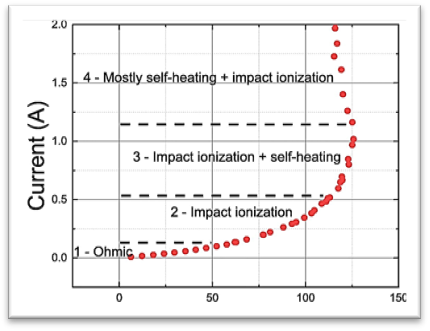 Amongst wide band gap semiconductors, diamond shows the best theoretical performances for power electronic applications. Diamond technology has steadily progressed in the last two decades with the demonstration, for instance, of n-type doping, high voltage Schottky diodes, and MOSFETs. Complexity of diamond based electronic devices fabrication lies in the high ionization energy of electrically active dopants (boron and phosphorous) that on the other hand enables to observe the effect of impact ionization avalanche and related electroluminescence even at room temperature. This PhD work focuses on study of this phenomenon that is still poorly understood in diamond and on design of new type of diamond high voltage electronic devices employing this effect. The work will be conducted at the Institute of Physics, Czech Academy of Sciences, in collaboration with the Faculty of Electrical Engineering CTU.
Amongst wide band gap semiconductors, diamond shows the best theoretical performances for power electronic applications. Diamond technology has steadily progressed in the last two decades with the demonstration, for instance, of n-type doping, high voltage Schottky diodes, and MOSFETs. Complexity of diamond based electronic devices fabrication lies in the high ionization energy of electrically active dopants (boron and phosphorous) that on the other hand enables to observe the effect of impact ionization avalanche and related electroluminescence even at room temperature. This PhD work focuses on study of this phenomenon that is still poorly understood in diamond and on design of new type of diamond high voltage electronic devices employing this effect. The work will be conducted at the Institute of Physics, Czech Academy of Sciences, in collaboration with the Faculty of Electrical Engineering CTU.
Investigation of plasma produced by high-power lasers in liquids
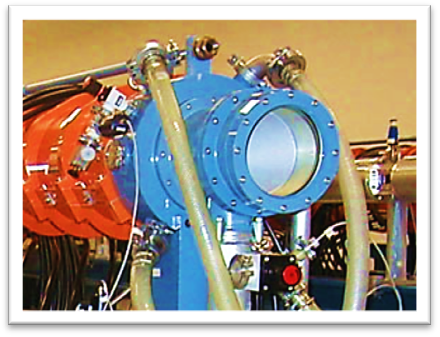 Laser-induced dielectric breakdown (LIDB) in a liquid produces a plasma fireball surrounded by the liquid bulk. The fireball will serve as a laboratory model of an acoustic cavitation. Central task of this PhD thesis lies in connecting the physical characteristics of laser-cavitation phenomena with their chemical consequences under the varied experimental conditions. High-power laser systems such as PALS (1kJ@350ps pulses) will be employed. Numerous techniques of plasma diagnostics (incl. optical emission spectroscopy, time-resolved interferometry, high-speed framing camera, thermal camera and so on) will be applied to investigate a spatio-temporal evolution of the laser cavitation. Special attention will be paid to a shock wave associated with the laser cavitation formation. A close collaboration with theoreticians is expected. The work will be conducted at the Institute of Physics and the Institute of Plasma Physics, Czech Academy of Sciences, in collaboration with the Faculty of Electrical Engineering CTU.
Laser-induced dielectric breakdown (LIDB) in a liquid produces a plasma fireball surrounded by the liquid bulk. The fireball will serve as a laboratory model of an acoustic cavitation. Central task of this PhD thesis lies in connecting the physical characteristics of laser-cavitation phenomena with their chemical consequences under the varied experimental conditions. High-power laser systems such as PALS (1kJ@350ps pulses) will be employed. Numerous techniques of plasma diagnostics (incl. optical emission spectroscopy, time-resolved interferometry, high-speed framing camera, thermal camera and so on) will be applied to investigate a spatio-temporal evolution of the laser cavitation. Special attention will be paid to a shock wave associated with the laser cavitation formation. A close collaboration with theoreticians is expected. The work will be conducted at the Institute of Physics and the Institute of Plasma Physics, Czech Academy of Sciences, in collaboration with the Faculty of Electrical Engineering CTU.
Study of processes induced by XUV/x-ray lasers in solid materials
 Short-wavelength lasers working in extreme ultraviolet (XUV), soft x-ray (SXR) and x-ray spectral ranges provide high fluxes of energetic photons. In these spectral ranges, a single photon carries an energy ranging from tens of eV to several keV. Such photon energy is high enough to break any covalent bond; it also exceeds a band gap energy even of an ionic crystal and a cohesive energy of any crystal lattice. Therefore XUV/x-ray laser beams can cause not only thermal phase transitions but also non-thermal modifications of solids. Various materials – insulators (e.g., organic polymers and ionic crystals), semiconductors (both elemental and compound ones) and metals (e.g., Ni, Cr, Au, and Pt) irradiated by focused beams of XUV/x-ray lasers of different kinds – both plasma and electron based ones – will be investigated by advanced instrumental analytical techniques. The work will be conducted at the Institute of Physics and the Institute of Plasma Physics, Czech Academy of Sciences, in collaboration with the Faculty of Electrical Engineering CTU.
Short-wavelength lasers working in extreme ultraviolet (XUV), soft x-ray (SXR) and x-ray spectral ranges provide high fluxes of energetic photons. In these spectral ranges, a single photon carries an energy ranging from tens of eV to several keV. Such photon energy is high enough to break any covalent bond; it also exceeds a band gap energy even of an ionic crystal and a cohesive energy of any crystal lattice. Therefore XUV/x-ray laser beams can cause not only thermal phase transitions but also non-thermal modifications of solids. Various materials – insulators (e.g., organic polymers and ionic crystals), semiconductors (both elemental and compound ones) and metals (e.g., Ni, Cr, Au, and Pt) irradiated by focused beams of XUV/x-ray lasers of different kinds – both plasma and electron based ones – will be investigated by advanced instrumental analytical techniques. The work will be conducted at the Institute of Physics and the Institute of Plasma Physics, Czech Academy of Sciences, in collaboration with the Faculty of Electrical Engineering CTU.
Research and development of metallic implants
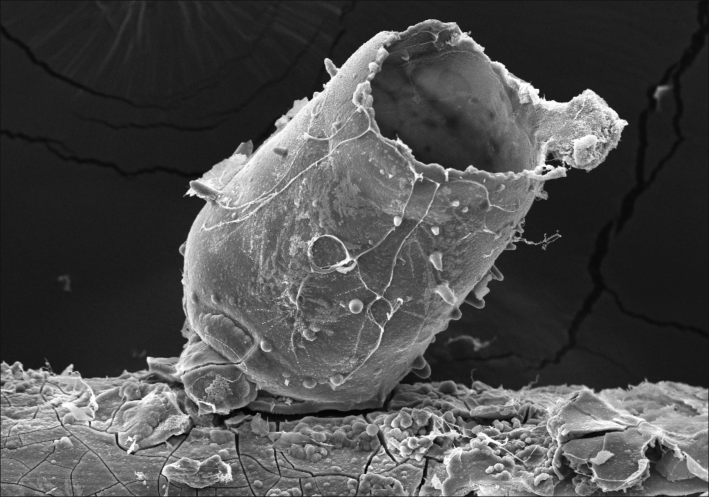 Metallic implants are an integral part of modern medicine. The subject of the work will be titanium implants or magnesium wires that dissolve completely in the human body. To conduct an effective development of a new implant, many fields of study need to be explored, such as physical metallurgy, processing of metals, fatigue of materials, corrosion in simulated body fluids and in-vivo testing. The topic reflecting student’s preferences will be tailored and based on a personal consultation. Utilization of a wide range of characterization techniques is expected. This includes equipment of Faculty of Nuclear Sciences and Physical Engineering CTU, Faculty of Electrical Engineering CTU, Institute of Physics of the Czech Academy of Sciences, Institute of Rock Structure and Mechanics of the Czech Academy of Sciences and other collaboating institutions.
Metallic implants are an integral part of modern medicine. The subject of the work will be titanium implants or magnesium wires that dissolve completely in the human body. To conduct an effective development of a new implant, many fields of study need to be explored, such as physical metallurgy, processing of metals, fatigue of materials, corrosion in simulated body fluids and in-vivo testing. The topic reflecting student’s preferences will be tailored and based on a personal consultation. Utilization of a wide range of characterization techniques is expected. This includes equipment of Faculty of Nuclear Sciences and Physical Engineering CTU, Faculty of Electrical Engineering CTU, Institute of Physics of the Czech Academy of Sciences, Institute of Rock Structure and Mechanics of the Czech Academy of Sciences and other collaboating institutions.
